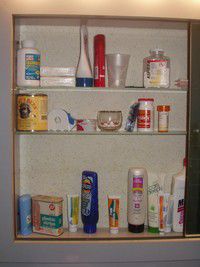Health NW column: Home medicine cabinet
Published 4:00 pm Tuesday, January 7, 2003

- Health NW column: Home medicine cabinet
Every home should have some basic supplies that will come in handy in times of illness or injury. Most bathroom cabinets are chock full of miscellaneous stuff, but often they don’t contain the most important items that may be needed in an emergency.
When I recently surveyed the medicine cabinets and first aids kits of my friends and family (with their permission, of course), I found enough expired medicines to stock a small pharmacy. Half-used tubes of gooey ointment which expired in the late 1980s elicited comments such as, “oh, that was for that weird rash I had after I got back from Mexico” and “I think that was for diaper rash” (this from a mom whose youngest is in high school now). Partially finished bottles of antibiotics and prescription pain pills were common too. These medicines can be dangerous in the wrong hands and should be thrown away.
In your next spare half-hour, go through your medicine cabinet and first aid supplies. If anything is long expired or if you don’t know what it’s for, get rid of it.
Then, line up all your good stuff and compare it to the list below. Any items that are missing should go on your shopping list.
Buying generic brand medicines is fine. I have listed some common trade names in parentheses. I don’t recommend buying those huge bottles (250 tablets or more) of pills, because they often expire before you use them all. I also worry that large quantities of pills could be dangerous in the wrong hands.
Contents of a well-stocked home medicine cabinet:
Acetaminophen (Tylenol): for fever, headache or other pain
Aspirin or Ibuprofen (Motrin, Advil) or Naproxen (Naprosyn): these all are anti-inflammatories for headache, menstrual cramps, muscle aches or other pain; they also work for fever
Diphenhydramine (Benadryl) or Chlorphenaramine: an antihistamine for allergies and allergic reactions like hives and itchy rashes
Pseudoephedrine (Sudafed): a decongestant for sinus and nasal congestion
Dextromethorphan cough syrup: many cough syrups also contain acetaminophen, antihistamines and/or decongestants, so read the label carefully
Pepto-Bismol: for upset stomach, nausea and diarrhea
Calcium carbonate (Tums, Maalox, Mylanta): for indigestion and heartburn
Saline eye drops: to flush foreign objects out of the eye
Hydrocortisone cream: for itchy rashes and eczema
Anti-fungal ointment: for athlete’s foot, jock itch, ringworm or other fungal infections of the skin
Antibiotic ointment (Neosporin): to prevent infection of wounds
Adhesive bandages (Band-Aids) of assorted sizes
An ACE bandage: for wrapping up sprained ankles or wrists
Gauze pads (3×3 or 4×4 size, also in rolls): for dressing wounds
First aid tape: for taping gauze over wounds
Thermometer: for measuring temperature during a fever
Tweezers: for removing splinters or other foreign bodies
Syrup of Ipecac (especially important for families with children): causes vomiting and may be recommended by Poison Control in cases of medicine overdose or poisoning
Latex gloves: to protect yourself and to reduce the risk of infection when touching open wounds
First Aid manual
Having a medicine cabinet stocked with these items may prevent a frantic middle-of-the-night search for a 24-hour pharmacy, and could even prevent a trip to the emergency room.
If anyone in your household has health problems or is taking any medicine regularly, check with their health care provider to be sure that these over-the-counter medicines are safe for them. Aspirin should not be given to children or teenagers who have the flu or chicken pox because of the risk of Reyes’ Syndrome, which can be fatal.
Make sure all the adults in your household know where these medical supplies are kept and what they’re used for. And of course, keep all medicines out of the reach of children.




